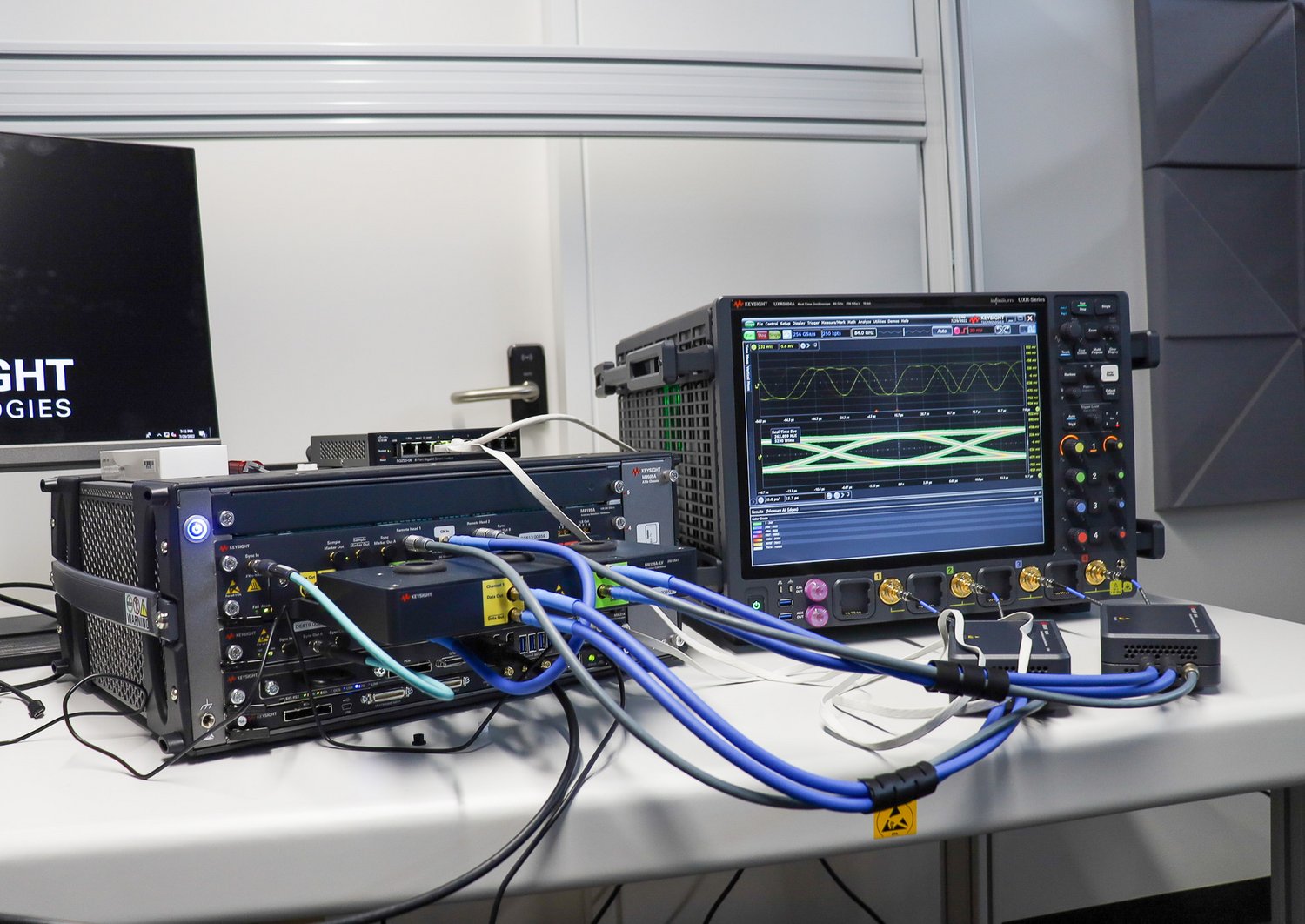5G is about to be rolled out for industrial applications while research for 6G has already started. The improvements of 5G will enable faster, more effortless, and more reliable processes in wireless machine-to-machine communication than ever before. Researchers predict that 6G technology will go beyond wired networks. Since 6G happens in the millimeter-wave range, or even sub-THz range, our researchers in the field of Millimeter-Wave Technologies are dedicated to this specific topic following the vision of one of SAL’s Lighthouses, 6G.
Millimeter-wave technologies are showing a rapid development while several technologies have already been introduced in the market already: The biggest interest of millimeter-wave technologies lies in point-to-point radios, automotive radar, satellite services, and military circuits design.
One of our researchers working on the special oscilloscope is Yun Fang. Yun’s research field is mainly on the millimeter-wave / THz IC design. At SAL, she appreciates working with measurement equipment which is quite rare. With the oscilloscope, it is possible to analyze high frequency signal’s quality directly. And by doing so, the measurement uncertainty is reduced greatly. When she tests our chips’ functions and quality, the oscilloscope can guide her to find the problem and explore the solutions and improvement.
Our Millimeter-Wave Technologies Unit is bringing innovation in wireless and radar systems technologies to the next level while focusing on developing key systems technologies reaching from MHz to sub-THz frequency range in emerging 5G/6G and radar/imaging/sensor applications.
An oscilloscope measures the change in voltage level of electrical signals over a specific time span. The oscilloscope monitor visualizes the voltage (Y) on the vertical axis and time on the horizontal axis (X) while the trace on the screen represents the waveform and shows the changes in voltage over time. These measurements allow to analyze amplitude, frequency, rise time, timer interval, and distortion, among others.
Modern oscilloscopes support a wide range of specific measurements and applications for debugging circuits or checking the quality of the acquired signals.
What an oscilloscope can do An oscilloscope measures the change in voltage level of electrical signals over a specific time span. The oscilloscope monitor visualizes the voltage (Y) on the vertical axis and time on the horizontal axis (X) while the trace on the screen represents the waveform and shows the changes in voltage over time. These measurements allow to analyze amplitude, frequency, rise time, timer interval, and distortion, among others. Modern oscilloscopes support a wide range of specific measurements and applications for debugging circuits or checking the quality of the acquired signals. Examples include
|



![[Translate to English (US):] researcher holds Tiny Power Box into the camera](/fileadmin/_processed_/5/3/csm_SAL_Tiny_Power_Box_Fotografin_Sarina_Dobernig_web__52__8578259984.jpg)




